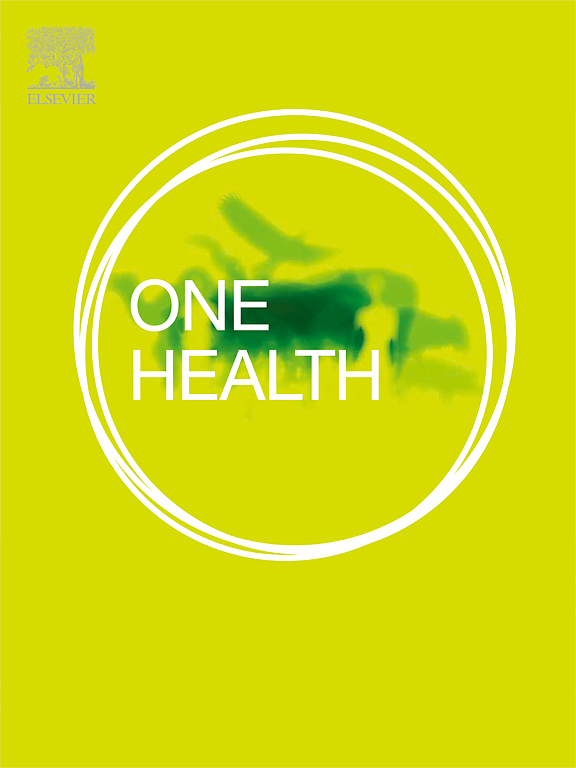Ceftriaxone-resistant Salmonella Panama ST48 detected in poultry food chain: A phylogeographical analysis
IF 4.1
2区 医学
Q1 INFECTIOUS DISEASES
引用次数: 0
Abstract
Salmonella Panama is a clinically relevant serovar isolated from food sources, particularly poultry and swine, being also reported in human gastrointestinal and extraintestinal disease globally. The emergence of broad-spectrum cephalosporin-resistant Salmonella has been considered a One Health matter that demands continuous microbiologic and genomic surveillance for a comprehensive understanding and mitigation actions. During a local surveillance study conducted to monitoring WHO priority Salmonella spp. in the Brazilian poultry food chain, a ceftriaxone-resistant Salmonella strain (PN2) exhibiting a positive extended-spectrum beta-lactamase (ESBL) phenotype was recovered from a chicken sample, in a slaughterhouse under federal inspection. Clinically relevant genomic data confirmed Salmonella Panama sequence type (ST) 48 carrying the blaCTX-M-8 ESBL gene into the broad-host range IncM1conjugative plasmid, and displaying point mutations in the quinolone determining resistance region (QRDR), related to fluoroquinolone non-susceptibility. Phylogeographical analysis of publicly available global genomes of S. Panama ST48 revealed a potential concern for One Health issues due to its zoonotic nature, clustering PN2 (52–153 cgSNP differences) along with genomically related S. Panama strains isolated from human infections, food products, and farm animals, in the United States of America and Brazil. Interestingly, using Bayesian clustering method, the PN2 strain was grouped in the main clade C4, along with a CTX-M-55-producing S. Panama strain isolated from a human stool sample in Taiwan. In summary, we alert for the potential risk of dissemination of a neglected serovar that has contributed to the Salmonella global disease burden through the food supply chain.
在家禽食物链中检测到头孢曲松耐药巴拿马沙门氏菌ST48:系统地理学分析
巴拿马沙门氏菌是一种从食物来源,特别是家禽和猪中分离出来的临床相关血清型,在全球范围内也有人类胃肠道和肠外疾病的报告。广谱耐头孢菌素沙门氏菌的出现被认为是一个健康问题,需要持续的微生物学和基因组监测,以全面了解和缓解行动。在为监测巴西家禽食物链中世卫组织重点沙门氏菌菌株而进行的一项地方监测研究中,在联邦检查的屠宰场的鸡肉样本中发现了一株具有头孢曲松耐药沙门氏菌菌株(PN2),表现出扩展谱β -内酰胺酶(ESBL)阳性表型。临床相关基因组数据证实巴拿马沙门氏菌序列型(ST) 48携带blaCTX-M-8 ESBL基因进入广宿主范围的incm1结合质粒,并在喹诺酮决定耐药区(QRDR)出现点突变,与氟喹诺酮类药物不敏感有关。对公开获得的巴拿马S. ST48全球基因组的系统地理分析显示,由于其人畜共患的性质,PN2 (52-153 cgSNP差异)与美利坚合众国和巴西从人类感染、食品和农场动物中分离出的基因组相关巴拿马S.菌株聚集在一起,可能引起One Health问题的关注。有趣的是,使用贝叶斯聚类方法,PN2菌株与从台湾人类粪便样本中分离出的产生ctx - m -55的巴拿马s菌株被归为主分支C4。总之,我们警惕一种被忽视的血清型传播的潜在风险,这种血清型通过食品供应链造成了沙门氏菌全球疾病负担。
本文章由计算机程序翻译,如有差异,请以英文原文为准。
求助全文
约1分钟内获得全文
求助全文
来源期刊

One Health
Medicine-Infectious Diseases
CiteScore
8.10
自引率
4.00%
发文量
95
审稿时长
18 weeks
期刊介绍:
One Health - a Gold Open Access journal.
The mission of One Health is to provide a platform for rapid communication of high quality scientific knowledge on inter- and intra-species pathogen transmission, bringing together leading experts in virology, bacteriology, parasitology, mycology, vectors and vector-borne diseases, tropical health, veterinary sciences, pathology, immunology, food safety, mathematical modelling, epidemiology, public health research and emergency preparedness. As a Gold Open Access journal, a fee is payable on acceptance of the paper. Please see the Guide for Authors for more information.
Submissions to the following categories are welcome:
Virology,
Bacteriology,
Parasitology,
Mycology,
Vectors and vector-borne diseases,
Co-infections and co-morbidities,
Disease spatial surveillance,
Modelling,
Tropical Health,
Discovery,
Ecosystem Health,
Public Health.
 求助内容:
求助内容: 应助结果提醒方式:
应助结果提醒方式:


